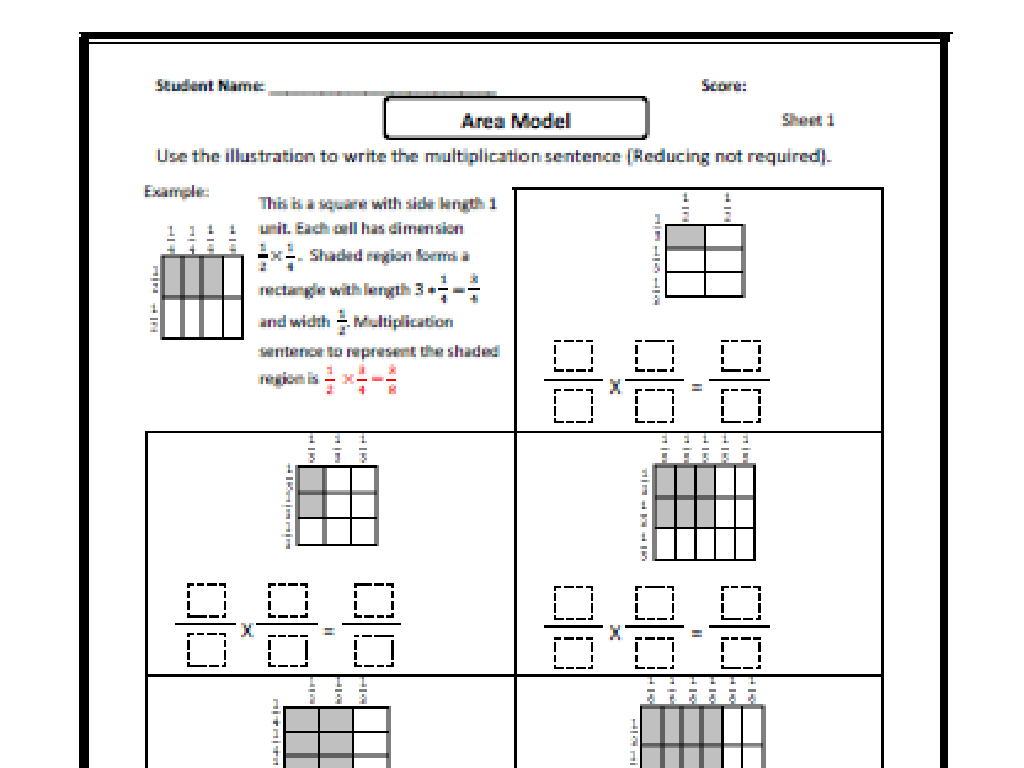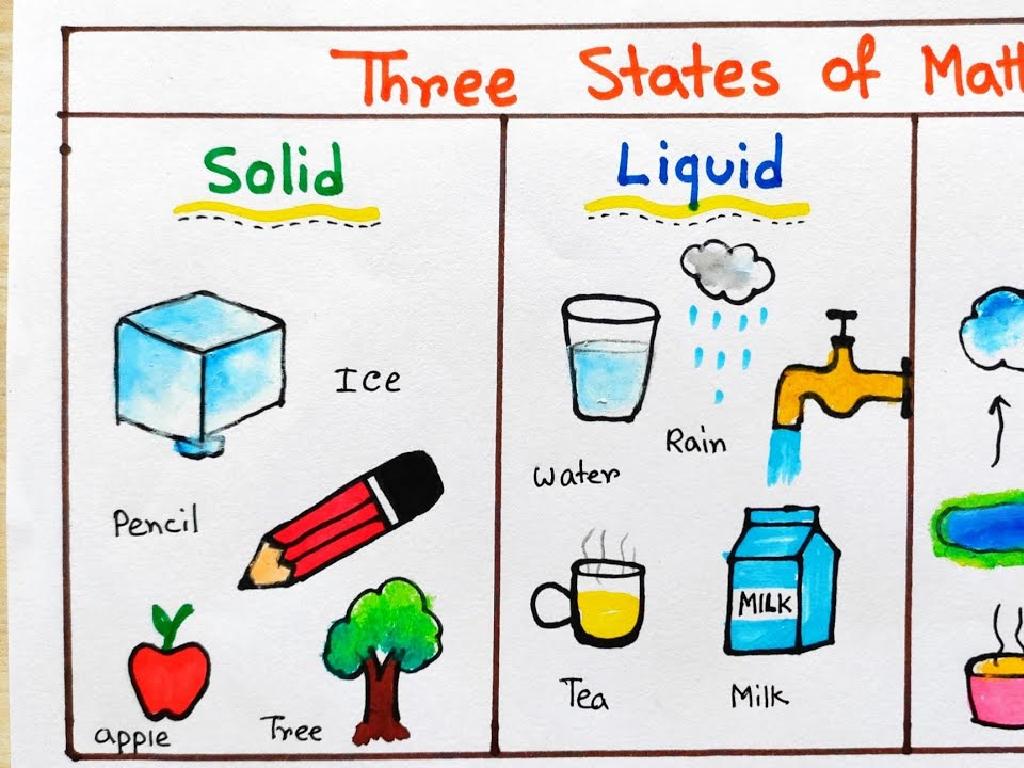How Do Plants Use And Change Energy?
Subject: Science
Grade: Seventh grade
Topic: Photosynthesis
Please LOG IN to download the presentation. Access is available to registered users only.
View More Content
Introduction to Photosynthesis
– Photosynthesis: Plants’ energy process
– The process by which plants use sunlight to synthesize foods from carbon dioxide and water.
– Plants’ food-making method explained
– Plants create glucose and oxygen from light, essential for their growth and energy.
– How plants transform light to growth
– Sunlight is captured by chlorophyll and converted into chemical energy.
– Overview of energy conversion in plants
|
This slide introduces the concept of photosynthesis, the fundamental process through which plants convert light energy into chemical energy to fuel their growth. It’s crucial to explain that photosynthesis is not just about plants ‘eating’ but about transforming energy from the sun into a form they can use to grow and thrive. Highlight the importance of sunlight, carbon dioxide, and water in this process. The overview should set the stage for a deeper dive into the chemical reactions involved in photosynthesis and how energy conversion is critical to both plant life and the broader ecosystem.
The Role of Energy in Plants
– Energy: The ability to do work
– Energy’s various forms
– Light, Chemical, Mechanical are energy types
– Energy in living organisms
– Organisms use energy for growth, movement, and function
– Photosynthesis: Plants’ energy conversion
– Plants convert light energy to chemical energy
|
This slide introduces the concept of energy, which is essential for all life processes. Energy is defined as the capacity to perform work, such as moving, growing, or reproducing. Students should understand that energy comes in various forms, including light, chemical, and mechanical. In the context of living organisms, energy is crucial for maintaining life functions. Specifically, for plants, the process of photosynthesis is how they capture light energy from the sun and convert it into chemical energy stored in glucose, which fuels their growth and development. This sets the stage for discussing how plants are the primary producers in ecosystems, harnessing energy that ultimately supports a wide range of life forms.
The Role of the Sun in Photosynthesis
– Sun: Primary energy source
– Plants capture sunlight
– Plants use leaves to absorb light, initiating photosynthesis
– Chlorophyll’s role
– Chlorophyll in leaves captures sunlight, giving plants their green color
– Photosynthesis basics
|
This slide introduces the fundamental concept that the sun is the primary source of energy for all life on Earth, particularly for plants through the process of photosynthesis. Highlight how plants are uniquely adapted to capture sunlight using their leaves, which contain chlorophyll. Chlorophyll is a vital pigment that not only gives plants their green color but also plays a crucial role in converting sunlight into chemical energy. This sets the stage for understanding the basics of photosynthesis, where light energy is transformed into a form that can be used by the plant to fuel growth and development. Encourage students to think about the sun’s energy as the starting point for the food chain and the importance of plants in supporting life on Earth.
Chloroplasts: Energy Converters
– Explore chloroplast structure
– Chloroplasts contain chlorophyll, aiding in energy absorption
– Chloroplasts’ role in photosynthesis
– They are the ‘kitchens’ where plants make their food
– Converting light to chemical energy
– Light energy captured is turned into glucose, a form of chemical energy
|
This slide introduces chloroplasts as the cellular organelles where photosynthesis occurs. Students should understand that chloroplasts are structured to maximize energy absorption, containing pigments like chlorophyll. Emphasize the importance of chloroplasts in the process of photosynthesis, where they act as the site for the conversion of solar energy into chemical energy, which is stored in glucose. This is crucial for the survival of the plant and, by extension, all life on Earth that relies on plants for oxygen and as a food source. Encourage students to think about the energy conversion process and its similarities to solar panels.
The Photosynthesis Equation
– Understanding photosynthesis
– Reactants: CO2, H2O, and sunlight
– Plants take in carbon dioxide (CO2), water (H2O), and sunlight to produce energy.
– Products: Glucose and O2
– Photosynthesis produces glucose (food) and oxygen (O2) as byproducts.
– Equation significance
– This equation summarizes how energy is transformed in nature.
|
This slide introduces the fundamental chemical process of photosynthesis, which is how plants convert light energy into chemical energy. The photosynthesis equation is central to understanding this process. It shows that carbon dioxide and water, in the presence of sunlight, are converted into glucose and oxygen. Glucose is a sugar that plants use for energy and growth, while oxygen is released into the atmosphere, which is vital for the respiration of living organisms. Emphasize the importance of sunlight as an energy source and discuss how the reactants are transformed into the products. This equation is not just a chemical representation but a reflection of the energy flow within ecosystems and the basis of life on Earth.
Stages of Photosynthesis: Energy Transformation
– Light-Dependent Reactions
– Plants capture sunlight to produce energy-rich molecules
– Light-Independent Reactions
– Plants use these molecules to make glucose, their food
– Energy Transformation Cycle
– Sunlight energy is converted into chemical energy
– Photosynthesis Importance
|
This slide introduces the two main stages of photosynthesis and how energy is transformed in plants. During the light-dependent reactions, chlorophyll within the chloroplasts captures sunlight and converts it into ATP and NADPH, which are energy-rich molecules. In the light-independent reactions, also known as the Calvin cycle, the plant uses ATP and NADPH to synthesize glucose from carbon dioxide, which serves as its food. This process illustrates the remarkable ability of plants to convert solar energy into chemical energy, which is essential for life on Earth. Emphasize the importance of photosynthesis in the global ecosystem, including its role in producing oxygen and serving as the foundation of the food chain.
The Vital Role of Photosynthesis
– Foundation of food chains
– Photosynthesis produces glucose, which is the starting point for all food chains.
– Oxygen production for life
– Plants release oxygen as a byproduct, which is essential for most living organisms to breathe.
– Photosynthesis and environment
– Reduces carbon dioxide, helping to regulate Earth’s climate.
– Significance for Earth’s ecosystems
|
Photosynthesis is not just a process for plants to make food; it’s the bedrock of all food chains, supporting life on Earth. By converting sunlight into energy, plants produce glucose, which is then used by other organisms for nourishment. Oxygen, a byproduct of photosynthesis, is crucial for the survival of aerobic organisms. Additionally, photosynthesis plays a significant role in mitigating climate change by absorbing carbon dioxide from the atmosphere. Understanding the environmental impact of photosynthesis is key to appreciating its importance in maintaining the balance of ecosystems. Encourage students to think about how all life is interconnected through this process.
Photosynthesis in the Real World
– Observing photosynthesis daily
– Plants turning sunlight into energy is observable in gardens and forests.
– Plant adaptations for energy
– Some plants have large leaves to catch more sunlight, others grow towards light.
– Diversity among photosynthetic life
– Algae, trees, and flowers all use photosynthesis, but in different environments.
– Photosynthesis impact on ecosystems
|
This slide aims to connect the concept of photosynthesis with students’ everyday observations. Start by discussing how we can see plants using sunlight to grow and thrive in gardens or forests. Explain how different plants have unique adaptations to maximize their energy use, such as the orientation of leaves towards the sun or variations in leaf size. Highlight the diversity of photosynthetic organisms, from tiny algae to giant trees, and how they are adapted to their specific environments. Emphasize the importance of photosynthesis in maintaining ecological balance, as it is the foundation of food chains. Encourage students to think of examples they have seen themselves and to consider the role of photosynthesis in those scenarios.
Class Activity: Leaf Experiment on Photosynthesis
– Set up your photosynthesis experiment
– Gather leaves, water, and find sunlight
– Observe changes and record in your journal
– Note color changes, bubbles from leaves, and other changes over time
– Understand how leaves use energy
– Discuss how leaves convert light into food for the plant
|
This class activity is designed to help students observe the process of photosynthesis in action. Provide each student or group with the necessary materials and guide them through setting up their experiment. They should place leaves in water and expose them to sunlight, then observe any changes such as the production of oxygen bubbles, which are evidence of photosynthesis. Students should record their observations, including any changes in color or other physical properties of the leaves, in their observation journals. Encourage them to think about how the energy from sunlight is being used by the leaves to produce food for the plant. This hands-on experience will help solidify their understanding of the photosynthesis process. Possible variations of the experiment could include using leaves from different types of plants, changing the intensity of light, or comparing with leaves kept in the dark.
Photosynthesis: Energy Conversion in Plants
– Summarize photosynthesis process
– Photosynthesis converts light energy into chemical energy via chlorophyll.
– Review energy use and change in plants
– Plants absorb sunlight, use it to transform water and CO2 into glucose and oxygen.
– Encourage class questions
– Reflect on today’s lesson
– Think about how this process supports life on Earth.
|
As we conclude, recap the photosynthesis process, emphasizing the transformation of light energy into chemical energy, which is stored in glucose. Highlight how plants are not just static life forms but are actively involved in energy conversion, crucial for their survival and growth. Encourage students to ask questions to clarify their understanding and to reflect on the importance of photosynthesis in the broader context of life on Earth. This reflection can lead to a deeper appreciation of the natural world and the complex interactions within ecosystems.
Homework: Local Plants and Photosynthesis
– Research a local plant
– Explore how it uses photosynthesis
– How does the plant convert sunlight into energy?
– Prepare a short presentation
– Include visual aids of the plant
– Photos or drawings to illustrate your findings
|
This homework assignment is designed to encourage students to connect the concept of photosynthesis with the real world by researching a plant that is local to their area. Students should look into how the plant captures sunlight and uses it to produce energy through the process of photosynthesis. They should prepare a short presentation to share their findings, which will help them practice their research and presentation skills. Including photos or drawings of the plant will provide a visual understanding and make the presentation more engaging. Teachers should provide guidance on how to research effectively and suggest resources where students can find information about local plants and photosynthesis.






